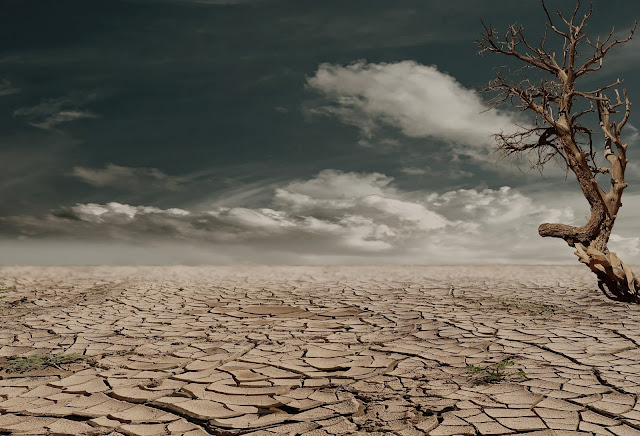9 things you personally can do to tackle climate change
9 actions you can take to help tackle climate change
Climate change is one of the biggest challenges facing humanity today. It affects every aspect of our lives, from our health and well-being to our economy and environment. But there is still hope for a better future if we act now and work together to reduce greenhouse gas emissions and adapt to the impacts of a changing climate. But what can we do as individuals to make a difference?Here are 9 things you can do to help fight the climate crisis and create a more sustainable future for yourself and others.
1. Speak up and take action.
One of the most powerful ways you can make an impact is by using your voice and your vote to demand action from those in power. Contact your local representatives, sign petitions, join campaigns and movements, and participate in protests and demonstrations. Make sure your leaders know that you care about climate change and expect them to take urgent steps to reduce greenhouse gas emissions and support a green recovery.
Speak up and demand action from your leaders. You have the power to influence the decisions that affect your community and your future. Contact your local representatives and urge them to support policies and initiatives that reduce carbon pollution and promote clean energy. Join a campaign or a movement that advocates for climate action, such as the Youth Strike 4 Climate or Extinction Rebellion. Use your voice, your vote, and your choice to make your voice heard.
2. Reduce your meat and dairy consumption.
Animal agriculture is a major contributor to climate change, as it produces large amounts of methane, a potent greenhouse gas, and requires vast amounts of land, water and feed. It also is a major cause of land degradation and biodiversity loss. By eating less meat and dairy, especially red meat, you can lower your environmental footprint and improve your health.
Try to eat more plant-based foods, such as fruits, vegetables, grains, beans and nuts, which are rich in fibre, vitamins and minerals. Choose local, seasonal, and organic produce whenever possible.
3. Choose green transport options.
Transport is another big source of greenhouse gas emissions, especially from cars, trucks and planes. Whenever possible, opt for low-carbon modes of transport, such as walking, cycling, public transit or carpooling. If you need to travel long distances, consider taking a train or a bus instead of flying. And if you own a car, try to drive less and switch to an electric or hybrid vehicle.
Transportation accounts for about a quarter of global greenhouse gas emissions, mainly from cars, trucks, buses, and planes. By using public transportation or active travel modes, such as walking, cycling, or scooting, you can reduce your carbon emissions and improve your physical and mental health. You can also avoid traffic congestion and save money on fuel and parking.
4. Save energy at home and at work, go green.
Energy use is another major driver of climate change, as most of our electricity comes from burning fossil fuels like coal, oil and gas. To reduce your energy consumption and save money on your bills, you can take simple steps such as turning off lights and appliances when not in use, switching to LED bulbs, installing insulation and draught-proofing, using renewable energy sources like solar panels or wind turbines, and buying energy-efficient appliances.
Make your home more energy efficient. Heating and cooling your home can use a lot of energy and contribute to greenhouse gas emissions. By making your home more energy efficient, you can reduce your energy consumption and save money on your bills. Some simple steps you can take include insulating your walls and roof, sealing any gaps or cracks around windows and doors, installing energy-efficient appliances and lighting, adjusting your thermostat settings, and using smart meters or devices.
Switch to renewable energy sources. Fossil fuels are the main drivers of climate change, as they release carbon dioxide and other pollutants into the atmosphere when burned. By switching to renewable energy sources, such as solar, wind, hydro, or geothermal power, you can reduce your dependence on fossil fuels and support the transition to a low-carbon economy. You can also save money on your energy bills and increase your energy security.
5. Avoid waste and embrace circularity.
Waste is not only a problem for landfills and oceans but also for the climate, as it releases methane and other greenhouse gases when it decomposes. To prevent waste and conserve resources, you can adopt a circular mindset that aims to reduce, reuse and recycle everything you can. For example, you can buy less stuff and choose durable and repairable products, avoid single-use plastics and disposable items, compost your organic waste, donate or sell your unwanted goods, and support businesses that use recycled materials or offer take-back schemes.
Reduce, reuse, recycle. The production and disposal of goods can have a significant impact on the environment, as they use resources, generate waste, and emit greenhouse gases. By reducing, reusing, and recycling your goods, you can minimize your environmental impact and save money. Some examples include buying less or buying second-hand items; repairing or repurposing items instead of throwing them away; donating or selling unwanted items; using reusable bags, bottles, cups, or containers; composting organic waste; and sorting your waste into recyclable or non-recyclable bins.
6. Educate yourself and others about climate change.
Knowledge is power when it comes to tackling climate change. The more you learn about the causes, consequences and solutions of the climate crisis, the more you can make informed decisions and inspire others to do the same. You can educate yourself by reading books, articles, reports and blogs on climate change, watching documentaries and videos, listening to podcasts and webinars, attending events and courses, and following experts and organizations on social media.
7. Plant trees or support reforestation projects.
Trees are natural carbon sinks that absorb carbon dioxide from the atmosphere and store it in their biomass. They also provide many other benefits,
such as oxygen production, water regulation, soil conservation, biodiversity protection, and aesthetic value. By planting trees or supporting reforestation projects in your area or around the world, you can help restore degraded landscapes, enhance ecosystem services, and mitigate climate change.
8. Educate yourself and others about climate change.
Climate change is a complex and multifaceted issue that requires scientific knowledge and critical thinking skills to understand its causes, consequences, and solutions. By educating yourself and others about climate change, you can increase your awareness and understanding of the problem; learn about the latest research and innovations; challenge myths and misinformation; inspire action and behavior change; and empower yourself and others to make informed decisions.
9. Support organizations that work on climate change issues.
There are many organizations that work on various aspects of climate change issues, such as:
- research,
- advocacy,
- education,
- innovation,
- adaptation.
By supporting these organizations with your time, money, or skills, you can help them achieve their goals and amplify their impact. You can also join their networks and communities and collaborate with other like-minded people who share your passion and vision for tackling climate change.
FAQs
1. How do I contact my MP in the UK?
You can contact your MP when you or people living in your area are affected by decisions made by the UK Parliament or by the Government. MPs represent all the people in their local area, whether they vote for them or not ¹. You can use your postcode or a place name to search the Find MPs service on the UK Parliament website and find out the name of your MP and how to contact them ¹.
Writing is probably the best method to contact your MP, as it provides a written record that can be referred to later. You can write a letter to your MP at the House of Commons, London SW1A 0AA or email them using the contact details in the Directory of MPs ¹. Remember to always include your own address when you write to your MP so that they will know you live in their constituency ¹.
If writing is not possible or you just want to ask a quick question or make an appointment, you can telephone your MP’s office. To telephone their office at the House of Commons, call 020 7219 3000 and ask to be put through to their office by giving your MP’s name ¹. To phone your MP at their local constituency office, you will find the contact details at your local town hall or library, or it may be given in the Directory of MPs ¹.
Source: Conversation with Bing, 06/05/2023(1) Contact your MP - UK Parliament. https://www.parliament.uk/get-involved/contact-an-mp-or-lord/contact-your-mp/ Accessed 06/05/2023.
(2) Contacting your MP - UK Parliament. https://www.parliament.uk/about/contacting/mp/ Accessed 06/05/2023.
(3) Contact an MP or member of the Lords - UK Parliament. https://www.parliament.uk/get-involved/contact-an-mp-or-lord/ Accessed 06/05/2023.
2. How do I contact my US Senator?
If you live in the USA and want to contact your Senator, you can find their contact information on the U.S. Senate website ¹. Addresses for each senator can be found on the senator's website or the state's web page. The following standard address can also be used: The Honorable (Name) United States Senate Washington, DC 20510 ¹.
Alternatively, you may phone the United States Capitol switchboard at (202) 224-3121. A switchboard operator will connect you directly with the Senate office you request ².
Source: Conversation with Bing, 06/05/2023(1) U.S. Senate: Contacting U.S. Senators. https://www.senate.gov/senators/senators-contact.htm?Class=1 Accessed 06/05/2023.
(2) U.S. Senate: Contacting The Senate. https://www.senate.gov/general/contacting.htm Accessed 06/05/2023.
(3) U.S. Senate: Senators. https://www.senate.gov/senators/ Accessed 06/05/2023.
3. How do I contact my Congressman or Congresswoman?
If you live in the USA and want to contact your Congressman or Congresswoman, you can find their contact information on the official House of Representatives website ². You can use your ZIP code to find your congressional district and your representative's website and contact page ².
If you know who your representative is but you are unable to contact them using their contact form, the Clerk of the House maintains addresses and phone numbers of all House members and Committees, or you may call (202) 224-3121 for the U.S. House switchboard operator ².
Source: Conversation with Bing, 06/05/2023(1) Find Your Representative | house.gov. https://www.house.gov/representatives/find-your-representative Accessed 06/05/2023.
(2) Find and contact elected officials | USAGov. https://www.usa.gov/elected-officials/ Accessed 06/05/2023.
(3) Contact Us | Congress.gov | Library of Congress. https://www.congress.gov/contact-us Accessed 06/05/2023.
4. How do I contact my representative if I live in Canada?
If you live in Canada and want to contact your representative, you can do so by finding their contact information on the House of Commons of Canada website ³. You can also call their general information line at 1-866-599-4999 or 613-992-4793 for more information ³.
Source: Conversation with Bing, 06/05/2023(1) Contact a Member of Parliament or contact us - House of Commons of Canada. https://www.ourcommons.ca/en/contact-us Accessed 06/05/2023.
(2) Learn about representatives - Canada.ca. https://www.canada.ca/en/immigration-refugees-citizenship/services/immigration-citizenship-representative/learn-about-representatives.html Accessed 06/05/2023.
5. Which organisations that are tackling climate change can I support?
There are many organizations that are working to tackle climate change. Some of these organizations include WWF ¹, Greenpeace ³, and 350.org ². These organizations work on various aspects of climate change issues, such as research, advocacy, education, innovation, and adaptation. By supporting these organizations with your time, money, or skills, you can help them achieve their goals and amplify their impact ².
Source: Conversation with Bing, 06/05/2023(1) Our fight against climate change and global warming | WWF. https://www.wwf.org.uk Accessed 06/05/2023.
(2) What are the solutions to climate change? | Greenpeace UK. https://www.greenpeace.org.uk/ Accessed 06/05/2023.
(3) 36 Organizations Helping Solve the Climate Crisis – Food Tank. https://foodtank.com/news/2020/10/36-organizations-helping-solve-the-climate-crisis/ Accessed 06/05/2023.




Comments
Post a Comment
Please respect others users and refrain from posting racist, abusive, pornographic or spam-related comments. All such comments will be deleted and the poster may be reported to the relevant body.